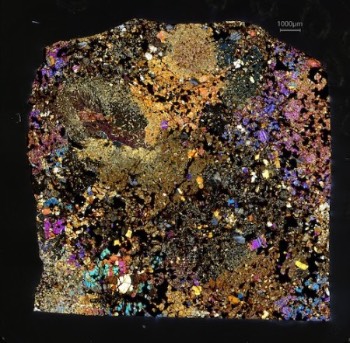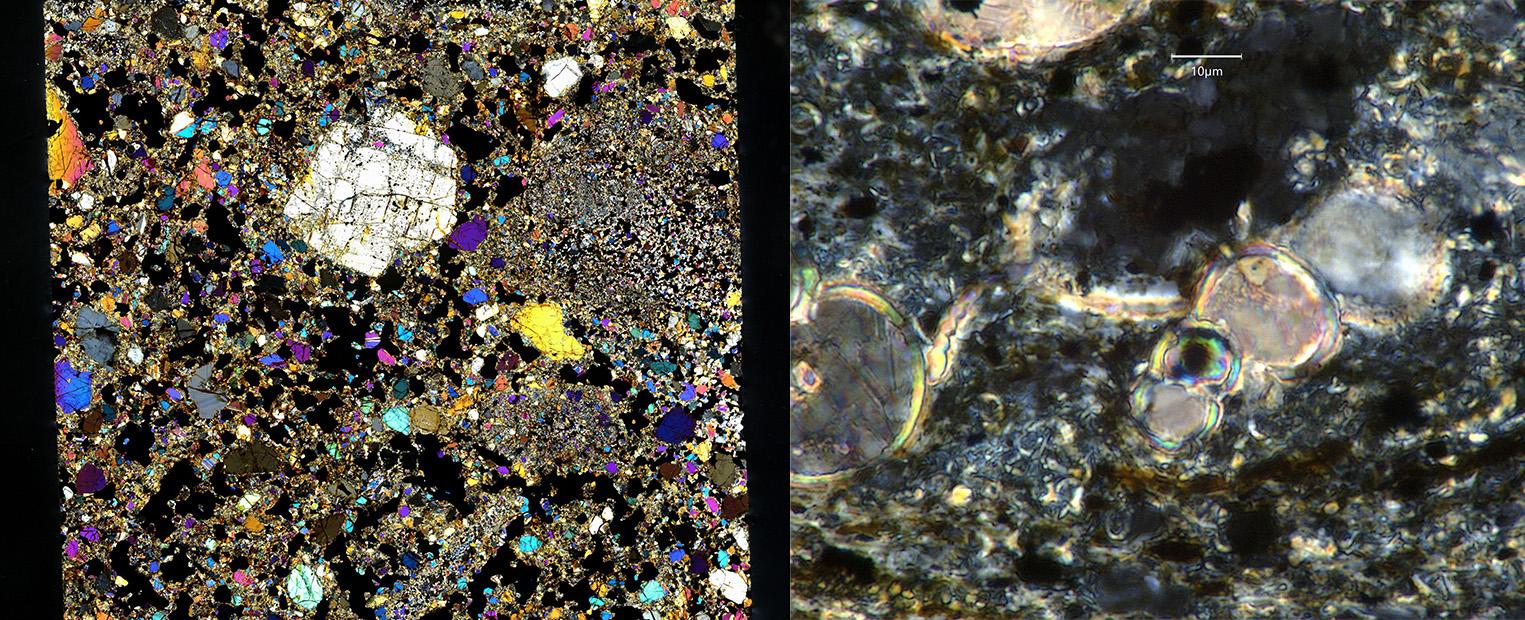The College of Science & Engineering at TCU has purchased two cutting-edge instruments: a Keyence VHX7000 and a Raman microscope.
The Keyence is a digital microscope for use between the Monnig Meteorite Gallery, the department of Geological Sciences, and the CORE Facility.
 Rhiannon Mayne, Ph.D., the gallery’s curator, is utilizing the Keyence to examine thin sections of meteorites,
which allows her to look at the optical properties of the minerals in the rock. She can
then identify what minerals are present, part of a study into understanding the overall
formational history of the sample. With this technology, Mayne can train students to operate the machine in as little
as five minutes to create high-quality imagery.
Rhiannon Mayne, Ph.D., the gallery’s curator, is utilizing the Keyence to examine thin sections of meteorites,
which allows her to look at the optical properties of the minerals in the rock. She can
then identify what minerals are present, part of a study into understanding the overall
formational history of the sample. With this technology, Mayne can train students to operate the machine in as little
as five minutes to create high-quality imagery.
The auto-focus feature allows for a comprehensive image of uneven surfaces, capturing multiple images in a quick succession.
Hunter Enis Endowed Chair in Petroleum Geology Richard Denne, Ph.D., uses the Keyence microscope to capture images of rock –thin sections (rock ground down fine enough to see through with a microscope) and high-resolution images of 3-dimensional fossils. The microscope is integral for his study of foraminifera, single-celled organisms with a shell. Most microscopes have trouble keeping all parts in focus at high resolution, but the Keyence can digitally combine multiple focus levels to produce a high-resolution image entirely in focus.
“The Keyence saves me and any students that use the microscope a huge amount of time and enables us to examine these fossils in greater detail than would otherwise be possible,” says Denne.
 The second new instrument, a confocal Raman microscope, combines Raman spectroscopy
and confocal microscopy. Raman spectroscopy uses a laser to gather detailed information
about the molecular structure at specific points within a sample, often called a "molecular
fingerprint." By using this microscope, scientists can get both chemical and structural
details simultaneously.
The second new instrument, a confocal Raman microscope, combines Raman spectroscopy
and confocal microscopy. Raman spectroscopy uses a laser to gather detailed information
about the molecular structure at specific points within a sample, often called a "molecular
fingerprint." By using this microscope, scientists can get both chemical and structural
details simultaneously.
The microscope also allows for the non-damaging study of meteorites, enabling scientists to learn about their mineral content, composition, structure, and history.
TCU Physics and Astronomy graduate student Dustin Johnson ’25 uses the confocal Raman microscope to find small structural differences in gallium oxide crystals, aiming to apply them in biological treatments and optoelectronics.
Additionally, graduate student Alina Valimukhametova ’25 uses the confocal Raman microscope to image and track graphene quantum dots, or GQDs, inside cells which can potentially be used in image-guided surgery and drug delivery.
The Keyence and Raman microscopes serve as launch points for endless scientific discovery by faculty and students at TCU, and further solidifies the college's commitment to foster knowledge of and curiosity about science, mathematics and engineering, inspiring individuals to discover and apply science and technology for a better future.
